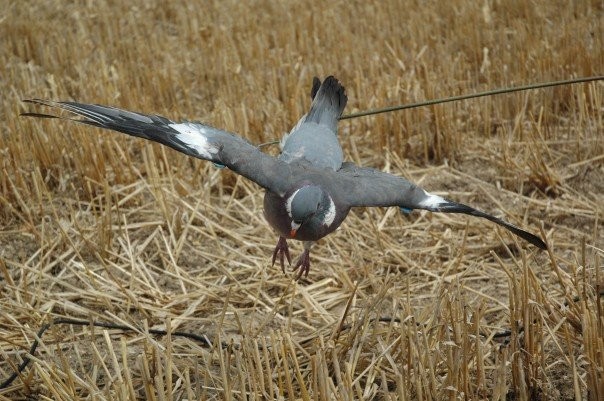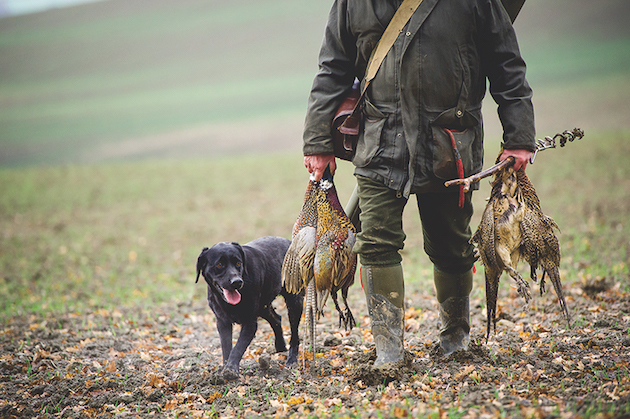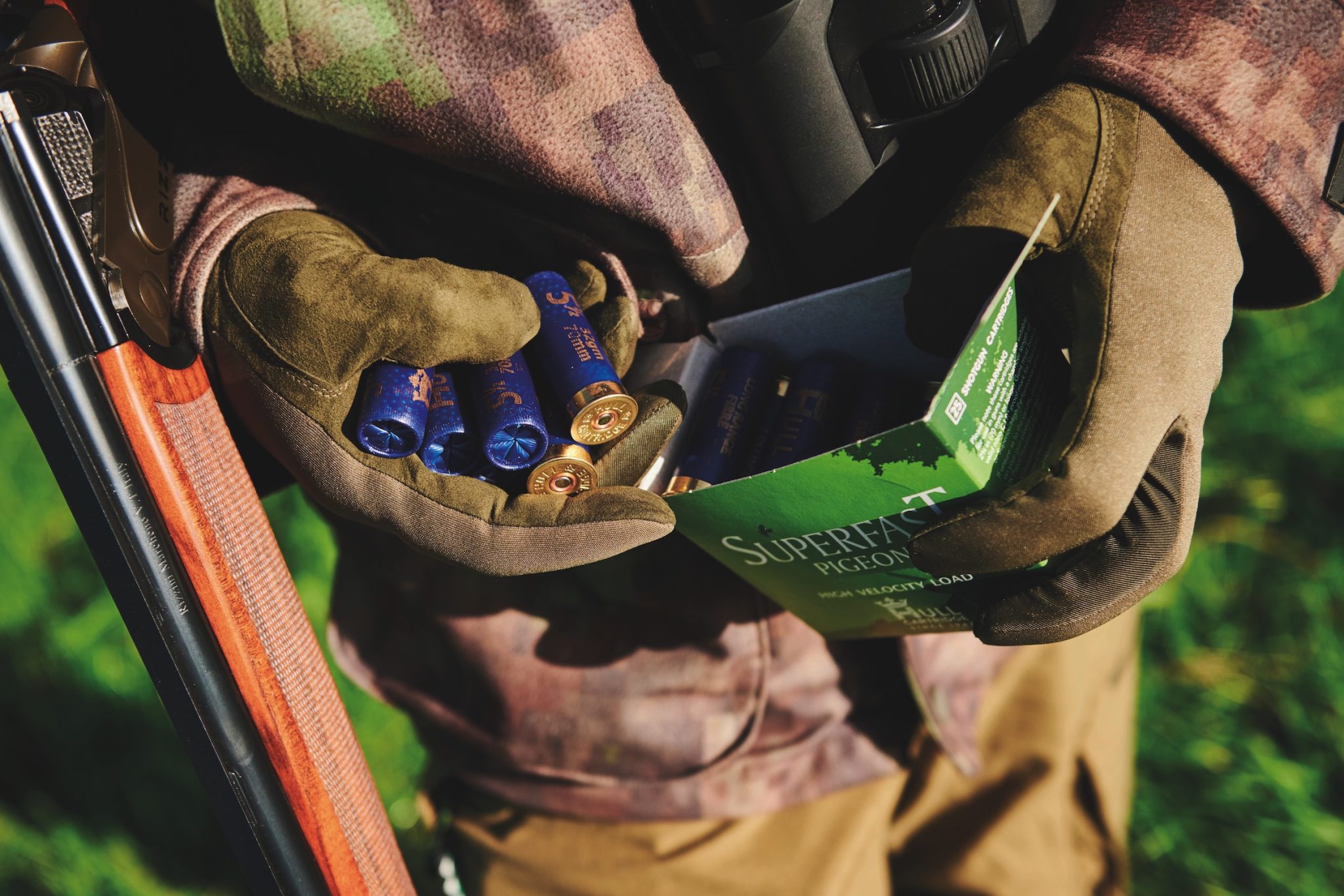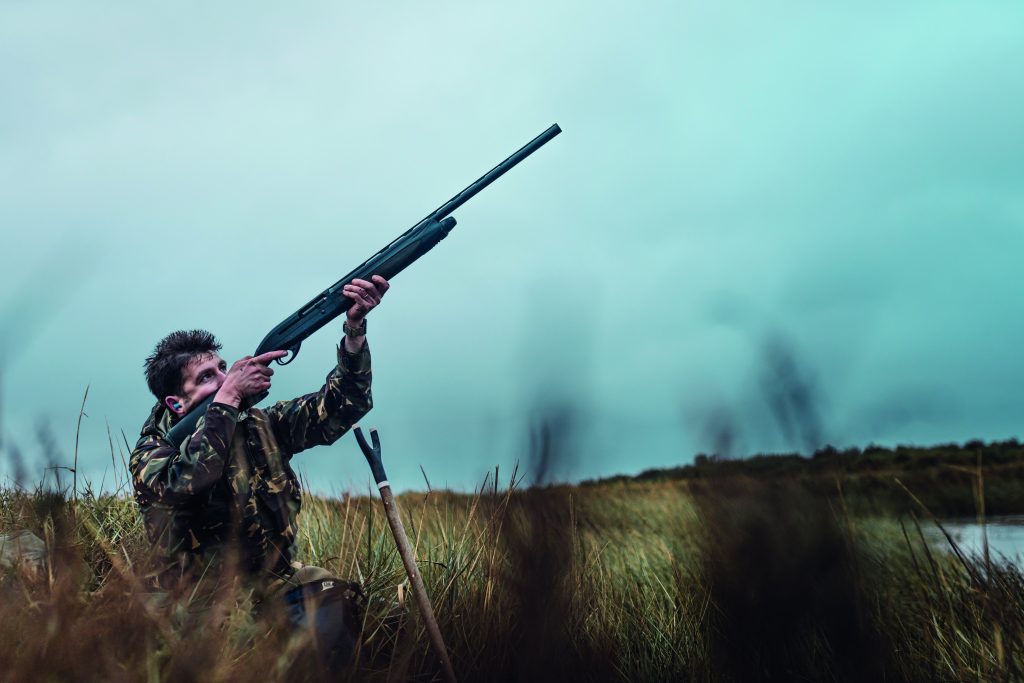The countdown is on for The British Shooting Show – book tickets online today and save on gate price!
A brassica battle plan
<strong>Dealing with woodpigeon on oilseed rape</strong>

Just how do we deal with woodpigeon on oilseed rape? During the winter months and early spring, the grey pests have flocked together in their hundreds or thousands, travelling from farm to farm, but are up and away as soon as you glance in their direction. Last year saw another bumper crop of acorns which,
together with gameshoots scattering hundreds of tons of wheat in the woods and covercrops during the gameshooting season meant that the pigeon were content to stay off the rape until late December. The gameshooting season may have ended, but there are many keepers who continue to feed their hoppers until the end of April.
So what does this mean to the dedicated pigeon shooter? It hardly seems worth setting up for business. It means carting all your gear long distances to areas where even the best 4x4s struggle. If you decide to take that risk, it often results in the farmer having to haul you out with a tractor. Once in the hide, you sit with a cold easterly wind on your back, or a strong wind blowing the hide into the next county, probably to where the birds are now feeding.
Leaving the pigeon to feed
So what?s the answer to this annual predicament? I?ve often read advice from experienced woodpigeon shooters, stating that we should leave birds to graze for up to 10 hours a day for two or three days before shooting them. This approach may work well at times, but I?m not so sure that it?s the correct course of action to adopt without upsetting the farmer.
Here in Sussex and Surrey we have large areas of patchy woodland, with smaller fields surrounded by high hedgerows. There is also far less oilseed rape, as many acres are devoted to sheep and dairy farming and, of course, to the invading housing spread. The farmers are very quick to fire rockets over the fields at the first sign of a small flock of woodies. I?m not sure why there is a different attitude down here. Perhaps the farmers farther north, who usually have much larger areas of rape, tolerate a reasonable amount of crop damage. Down this way, however, especially on the smaller units they definitely don?t and they want the problem to be dealt with as swiftly as possible.
Teamwork and tactics
Our 12-man pigeon shooting team has come up with a solution that seems to work well. We now have a rota, taking it in turns to protect this valuable crop, working in pairs. Most of our members are retired, so we are able to cover every day of the week. The task is to put the pigeon off the fields and then wait and watch. If they start to return in a reasonably short time, say half an hour, and in reasonable numbers, we set up for business. If not, the ropes of rook bangers are positioned to keep them off the area for the rest of the day.
Our largest patch this year is 140 acres in 10 medium-sized fields. Two Magnum ropes correctly positioned should cover the scaring for six hours. The second patch is 50 acres and takes only one Magnum rope to keep it clear of the birds. Any member who stops shooting before 3pm uses half a rope (six alf-hour bangs), which takes over from him as a deterrent for the rest of the day. For various reasons this tactic doesn?t suit all parts of the country.
This year, out of 17 farms, we have only the two patches of rape and we do our duty effectively at a time when the farmers really need us. This may seem like unpaid work and it probably is, but it earns respect and future recommendations. As a reward for all the fuel costs and time, we?ll be allowed to shoot on the peas; later, during July and August, we?ll be back on the rape in good weather. And we?ll be carting off a large bag of pigeon, which is reward enough for us.
Related Articles
Get the latest news delivered direct to your door
Subscribe to Shooting Times & Country
Discover the ultimate companion for field sports enthusiasts with Shooting Times & Country Magazine, the UK’s leading weekly publication that has been at the forefront of shooting culture since 1882. Subscribers gain access to expert tips, comprehensive gear reviews, seasonal advice and a vibrant community of like-minded shooters.
Save on shop price when you subscribe with weekly issues featuring in-depth articles on gundog training, exclusive member offers and access to the digital back issue library. A Shooting Times & Country subscription is more than a magazine, don’t just read about the countryside; immerse yourself in its most authoritative and engaging publication.






